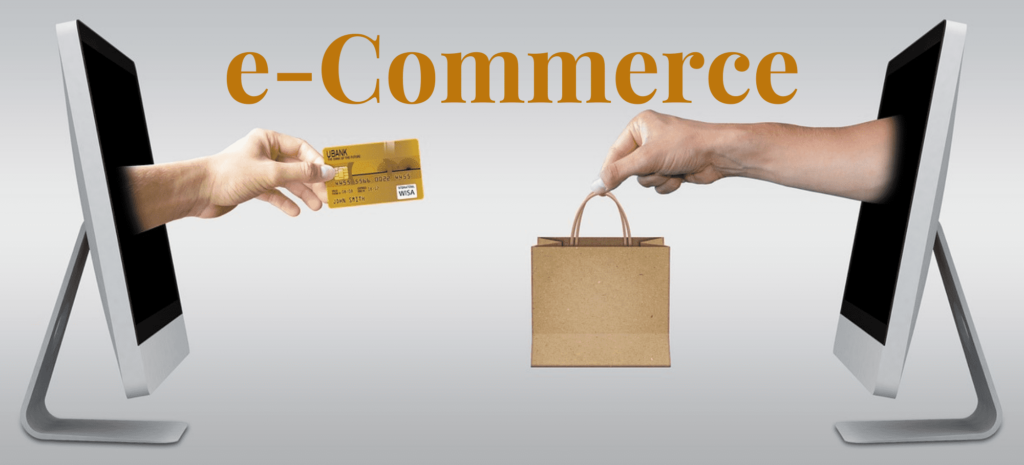
E-commerce (electronic commerce) refers to the buying and selling of goods or services over the internet. It involves online transactions, digital payment processing, and the management of online storefronts. For website owners, e-commerce is crucial for several reasons:
Global Reach: E-commerce allows businesses to reach a global audience, breaking down geographic barriers that limit traditional brick-and-mortar stores.
24/7 Availability: Online stores operate round the clock, enabling businesses to make sales at any time, providing convenience to customers.
Cost Efficiency: Running an online store is often cheaper than maintaining a physical store. It reduces costs related to rent, utilities, and staffing.
Customer Insights: E-commerce platforms collect data on customer behavior, preferences, and purchasing patterns. This helps website owners improve marketing strategies and personalize the shopping experience.
Scalability: Ecommerce businesses can grow rapidly without the constraints of physical space, allowing for easier expansion and diversification of products or services.
Starting at age 44, your energy, metabolism, and overall well-being may be silently declining. Don’t wait for symptoms.
What is E-commerce?
E-commerce (short for electronic commerce) refers to the buying and selling of goods or services using the internet. It also involves the transfer of money and data to facilitate these transactions. E-commerce can take various forms:
- B2C (Business to Consumer): Businesses sell products or services directly to individual customers (e.g., Amazon, Walmart).
- B2B (Business to Business): Transactions between businesses, such as manufacturers and wholesalers, or wholesalers and retailers.
- C2C (Consumer to Consumer): Individuals sell products or services to each other (e.g., eBay).
- C2B (Consumer to Business): Individuals sell goods or services to businesses (e.g., freelancers offering services to companies).
Why WordPress for E-commerce?
WordPress is a popular platform for building websites, and with the right plugins, it can be transformed into a powerful e-commerce site. The main advantages of using WordPress for ecommerce include:
- Ease of Use: WordPress is known for its user-friendly interface.
- Customization: Thousands of themes and plugins allow you to create a highly customized e-commerce store.
- SEO-Friendly: WordPress is built with search engine optimization in mind, which helps your ecommerce store rank better in search engines.
- Scalability: With plugins like WooCommerce, WordPress can grow with your e-commerce business.
Best WordPress Plugin for E-commerce
When it comes to choosing the best plugin for creating an ecommerce site on WordPress, WooCommerce is the top choice. Here’s why:
- Popularity: WooCommerce powers over 30% of all online stores, making it a leading solution in the world of ecommerce.
- Integration: WooCommerce integrates seamlessly with WordPress, transforming it into a robust e-commerce platform.
- Flexibility: Whether you’re selling physical goods, digital products, or services, WooCommerce provides flexibility for all kinds of ecommerce businesses.
- Customization: With a variety of themes and extensions, WooCommerce allows you to create a tailored ecommerce experience.
- Scalability: WooCommerce works well for both small-scale e-commerce startups and large ecommerce enterprises.
- Open-source: WooCommerce is free to install, with numerous paid extensions to enhance your ecommerce store’s functionality.
What is WooCommerce?
WooCommerce is a free, open-source plugin that transforms a WordPress website into a full-fledged ecommerce store. It offers extensive functionality for managing products, processing payments, calculating taxes, handling shipping, and much more. WooCommerce is popular because of its ease of use, flexibility, and vast ecosystem of extensions, making it a cornerstone for many ecommerce businesses.
How WooCommerce Works in E-commerce
- Product Listings: WooCommerce allows you to create and manage product listings, complete with descriptions, prices, and images, making your ecommerce store visually appealing.
- Inventory Management: WooCommerce helps track stock levels, manage orders, and restock products—essential for running a successful e-commerce operation.
- Payment Gateways: WooCommerce supports multiple payment methods, including credit cards, PayPal, Stripe, and other third-party gateways, ensuring a smooth ecommerce checkout experience.
- Order Processing: It automates order processing, from generating order confirmations to tracking deliveries, making the overall ecommerce management process more efficient.
- Shipping: You can configure shipping rates, zones, and methods, simplifying logistics for your ecommerce business.
Step-by-Step Guide to Installing WooCommerce for Your E-commerce Store
If you’re ready to turn your WordPress website into a full-featured ecommerce store, here’s a step-by-step guide on how to install WooCommerce.
Prerequisites for E-commerce with WooCommerce:
- A WordPress Website: To begin your ecommerce journey, you’ll need a WordPress website hosted on a reliable server.
- Domain and Hosting: Ensure you have a Domain Name and WordPress-compatible Hosting (such as Hostinger, Hostgator, Bluehost, SiteGround or Go Daddy, among others) suitable for running an ecommerce store.
Step-by-Step Installation Guide:
Login to WordPress Dashboard:
- Go to your WordPress admin panel (
www.yoursite.com/wp-admin).
- Go to your WordPress admin panel (
Install WooCommerce Plugin:
- Navigate to Plugins > Add New in the WordPress sidebar.
- Search for WooCommerce in the search bar.
- Click Install Now and then click Activate after installation is complete.
WooCommerce Setup Wizard:
- After activating WooCommerce, the Setup Wizard will launch automatically.
- Follow these steps in the Setup Wizard to configure your ecommerce store:
- Store Setup: Enter your store’s address, industry, and what type of products you’ll sell (physical, digital, or both).
- Payment Setup: Choose payment gateways like PayPal and Stripe to accept payments for your ecommerce business.
- Shipping Options: Set your preferred shipping rates and methods (e.g., free shipping or flat rate) to streamline the logistics of your ecommerce store.
- Recommended Plugins: WooCommerce may suggest useful plugins for enhanced e-commerce functionality, like WooCommerce Shipping & Tax or Jetpack.
- Activate: Click through the final prompts, and WooCommerce is ready to power your e-commerce site!
Add Products to Your E-commerce Store:
- Navigate to Products > Add New.
- Input the product name, description, and product details like price, stock, and categories, ensuring your ecommerce catalog is comprehensive.
- Upload product images and set shipping details (if applicable).
- Publish the product to make it live on your e-commerce store.
Configure Store Pages for E-commerce:
- WooCommerce automatically generates essential ecommerce pages: Shop, Cart, Checkout, and My Account.
- Ensure these pages are functional by navigating to WooCommerce > Settings > Advanced and reviewing page assignments to enhance the user experience on your e-commerce store.
Payment Gateways in WooCommerce for E-commerce
Payment Gateways are essential for processing transactions in your ecommerce store. WooCommerce supports a wide range of payment gateways, allowing you to accept various payment methods.
Common Payment Gateways for WooCommerce and E-commerce:
PayPal:
- PayPal Standard: Allows customers to pay via their PayPal accounts or credit/debit cards, making it a trusted payment method for ecommerce.
- PayPal Express Checkout: Offers a streamlined checkout process for faster transactions, boosting your e-commerce store’s conversion rate.
Stripe:
- Accepts credit and debit card payments directly on your website, making Stripe a versatile choice for your ecommerce checkout.
- Supports Apple Pay and Google Pay.
WooCommerce Payments:
- A payment solution developed by WooCommerce itself, offering full integration with your store’s dashboard for managing ecommerce payments seamlessly.
Square:
- Ideal for businesses with both physical and ecommerce stores. Syncs products and inventory between physical locations and the WooCommerce store.
Authorize.Net:
- A popular and secure credit card payment gateway, often used by larger e commerce businesses.
Other Gateways:
- WooCommerce also supports Amazon Pay, Klarna, and many country-specific payment solutions, offering flexibility for international e-commerce.
Setting Up a Payment Gateway:
- Navigate to WooCommerce > Settings > Payments.
- Choose your desired payment gateway (e.g., PayPal) to enable smooth transactions for your ecommerce customers.
- Follow the setup instructions provided by WooCommerce to integrate your account with the gateway, ensuring your ecommerce store is ready for sales.
How to Open a PayPal Account for E-commerce
Using PayPal in WooCommerce requires you to have a PayPal account.
Steps to Create a PayPal Account for Your E-commerce Store:
Visit PayPal Website:
- Go to PayPal’s website and click on Sign Up.
Choose a Business Account:
- For ecommerce purposes, it’s best to select a Business Account.
- Provide your business information, including email, business name, address, and phone number.
Link Bank Account or Credit Card:
- To withdraw money from PayPal to your bank, link your bank account or credit card by following the prompts. PayPal may ask you to verify your bank account through small deposits.
Verify Account:
- Confirm your email address and complete the identity verification process.
Enable PayPal in WooCommerce:
- Go to WooCommerce > Settings > Payments.
- Activate PayPal Standard or PayPal Checkout and enter your PayPal credentials to start accepting payments in your ecommerce store.
WooCommerce Themes and Extensions
To optimize your WooCommerce store, you can use themes and extensions designed specifically for WooCommerce:
- Themes: Choose a WooCommerce-compatible theme like Storefront, Astra, or Flatsome for better user experience and design.
- Extensions: WooCommerce offers many plugins to extend its functionality, such as:
- WooCommerce Subscriptions for recurring payments.
- WooCommerce Bookings for scheduling appointments.
- WooCommerce Memberships to offer exclusive member-only content.
WooCommerce is the most flexible and popular e-commerce solution for WordPress, offering extensive features for online stores. Setting it up involves installing the WooCommerce plugin, configuring payment gateways like PayPal, and customizing your store with extensions and themes. By leveraging WooCommerce, businesses of any size can create a highly functional and professional online store.
Discover More of Technology Splendor: Explore Our Other Sites
Your Health is your Best Investment
Energy, clarity, and balance are the foundation of every dream. Without health, wealth loses its shine and relationships lose their spark. Discover strategies to strengthen your body, sharpen your mind, and energize your spirit.
Learn How to Protect It →Relationships Give Life Meaning
Health gives you energy. Wealth gives you freedom. But only deep, authentic relationships give life true purpose. Discover the tools to connect, love, and communicate at your best.
Improve your Personal and Business Relationships
